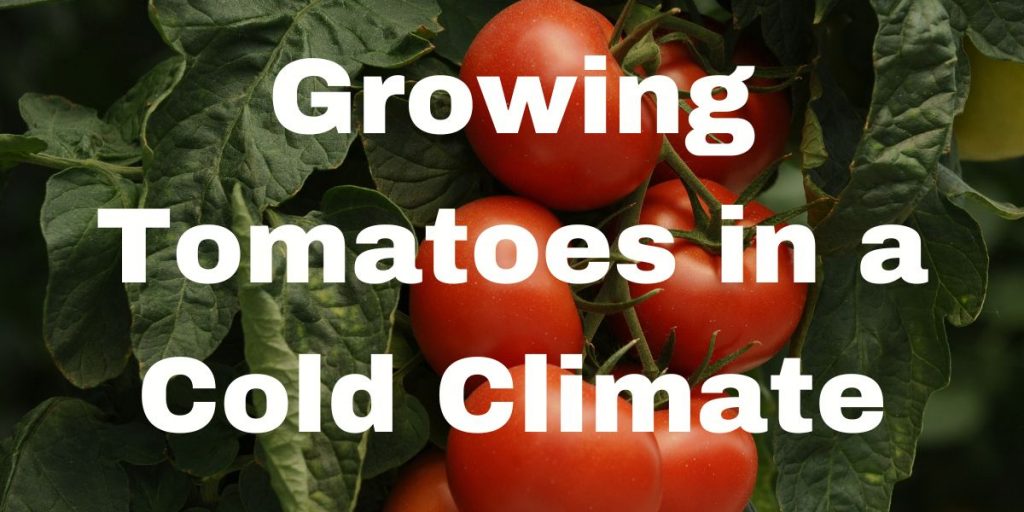Home-grown tomatoes are hard to beat for fresh flavor. And by growing them in the home garden, you can save money, too. Tomatoes are relatively easy to grow if you observe proper planting location, select the proper varieties and give them the limited summer care they need.
LOCATION – Tomatoes grow, flower and produce best when they are planted in the sunniest, hottest part of the garden. In fact, this is one crop that will do well on the south or west side of the home where the plants would get full sun, plus reflection off the foundation or side of the home.
Tomatoes also do well in tires because the black sides of the tires absorb heat during the day and radiate it at night. They can be planted with plastic covering the soil, for the same reason. Tomatoes are also good plants to use in containers on the patio, deck or lanai.
SOIL PREPARATION – If you spend enough time preparing the soil, the plants will require little care the rest of the season. Tomato plants need lots of organic humus in the soil to do well, so mix generous quantities of compost or processed manure (steer manure) and peat moss, mixing it thoroughly with your existing planting soil. Prepare the planting hole about 18 inches across and approximately 12 inches deep. Add the correct amount of an all-purpose vegetable garden fertilizer ,such as 15-10-10, at planting time, watering it in thoroughly.
VARIETIES TO GROW – First, if you have been growing ,a particular variety and are pleased with the results, by all means stick with it. But if you are growing tomatoes for the first time or are only experiencing so-so results, here are a few of the varieties recommended for this region. Cherokee Purple is probably one of the best of the varieties that produces large tomatoes, up to two pounds. Early Girl is one of the most popular. The fruit is medium sized and fairly early. In tests conducted here about 10 years ago the researchers liked the variety IPB. Pixie is a nice variety that grows only four feet high and has attractive foliage, so it is a good variety for a container on the patio, as are the varieties Patio, Red Cherry and Tiny Tim. Siletz is a good recent introduction. Presto, Spring Set and New Yorker were other recommendations, but they usually are difficult to find. Local outlets often feature varieties such as Better Boy, Big Early, Burpee Big Boy and Champion. All the cherry tomatoes do well here, but the varieties Sweet 100, Sweetie, Red Cherry and Tiny Tim probably are the most popular. Yellow Plum and Golden Jubilee are the most popular yellow varieties, but Gold Nugget was the earliest of all varieties to ripen in our test garden in recent years. Remember, with our cool marine climate it is important to plant quick-growing, early maturing varieties. Glacier and Siberia are two of the earliest; both are medium-small varieties, so you might want to try one of them along with some of the others.
PLANTING – Tomato plants can be planted a little deeper in the soil. Also, you can plant more than one plant per hole. In fact, in some of the commercial fields in California growers are now planting four plants in the same hole where one was planted in the past. The idea is that the four plants compete for the same amount of moisture, fertilizer and space; this creates stress on the plants, causing them to bear much heavier.
STAKING – There are several ways to provide support for tomato plants. In the past, the most popular method was to tie the plants to stakes as they grow. Today, wire tomato cages are often used to support the vines.
FEEDING – Prepare the soil well and it should not be necessary to fertilize the plants again. Overfeeding can encourage too much foliage growth .instead of proper fruit production. However, should the plant leaves begin to turn a little off color during the growing season, then a light feeding may be necessary. Use tomato fertilizer or vegetable garden food for this feeding.
WATERING – When possible, use the irrigation method, letting an open hose run at the base of the plants. In other words, try to keep the water off the leaves. Water heavily, then allow the soil to dry considerably before re-watering.
PRUNING – It is not necessary to remove suckers from tomatoes. Nor is it necessary to prune them, unless the foliage gets too thick and there is a need to get more air and light into the plant. Late in the season, when it is obvious that the top flowers will not have time to produce fruit, go ahead and prune them back so the energies of the plant are devoted to the development of the fruit already on the plant.
-
 Tomato – Oregon Spring$1.99
Tomato – Oregon Spring$1.99 -
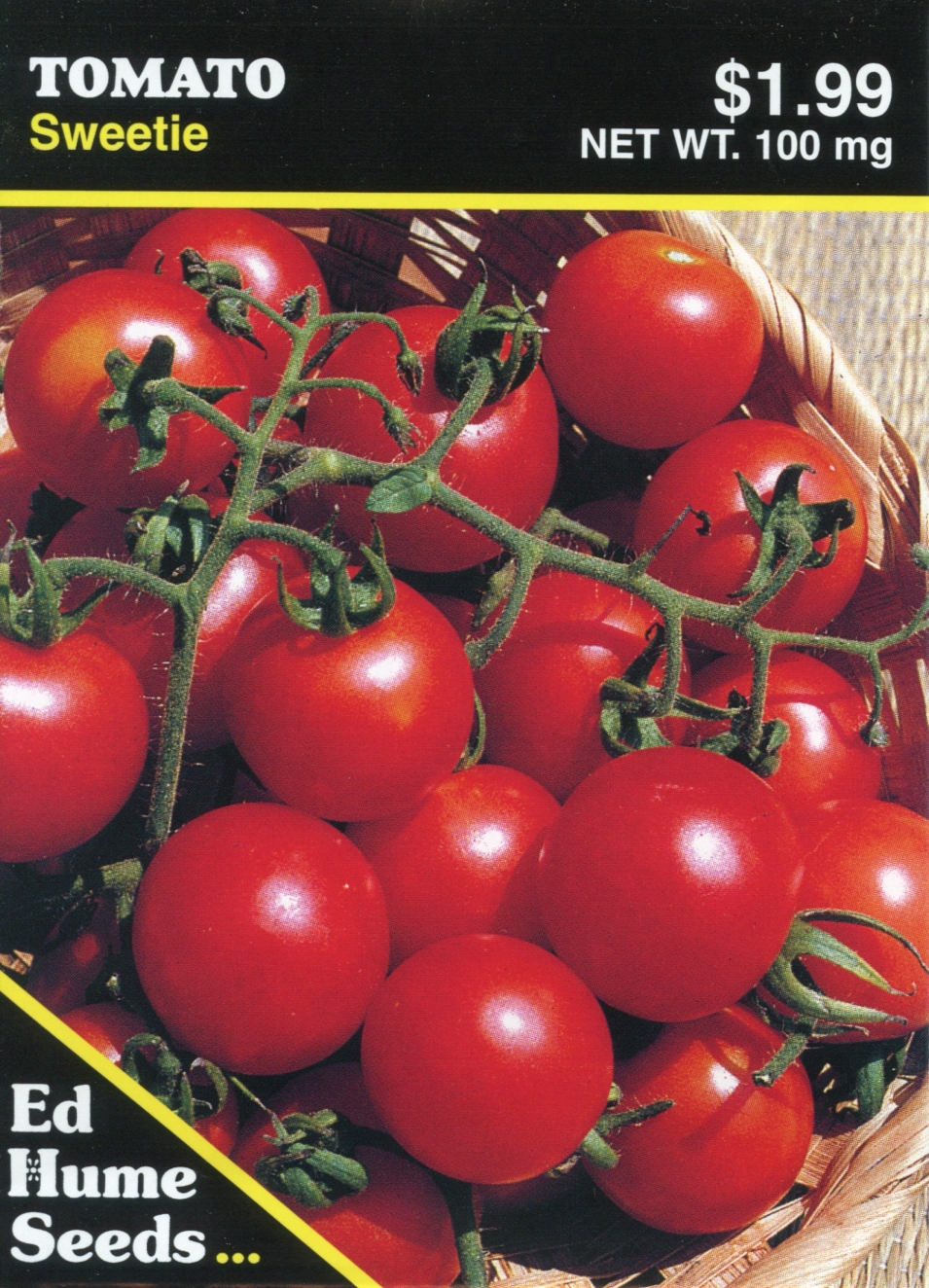 Tomato – Sweetie$1.99
Tomato – Sweetie$1.99 -
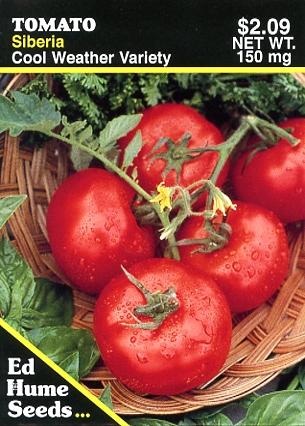 Tomato – Siberia, Cool Weather Variety$2.09
Tomato – Siberia, Cool Weather Variety$2.09 -
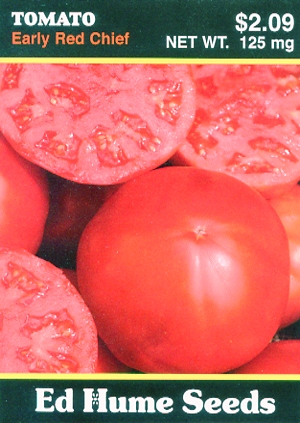 Tomato – Early Red Chief$2.09
Tomato – Early Red Chief$2.09 -
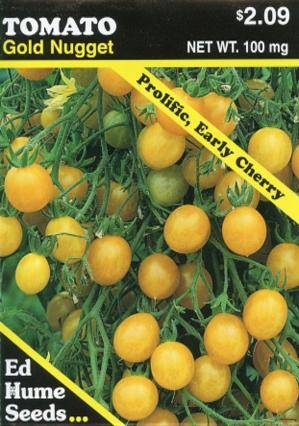 Tomato – Gold Nugget$2.09
Tomato – Gold Nugget$2.09 -
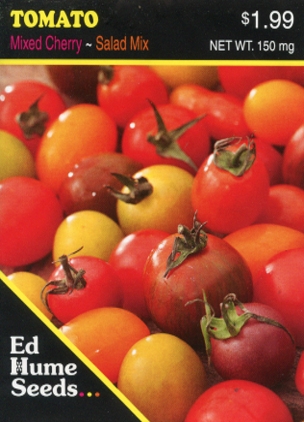 Tomato – Mixed Cherry$2.09
Tomato – Mixed Cherry$2.09 -
 Tomato – Heirloom Rainbow Blend$2.29
Tomato – Heirloom Rainbow Blend$2.29
